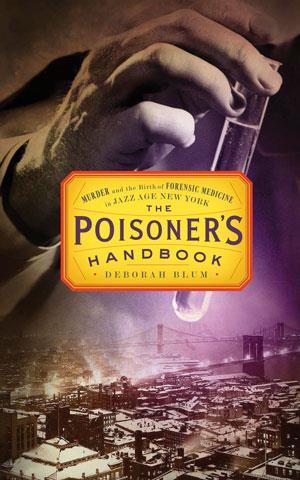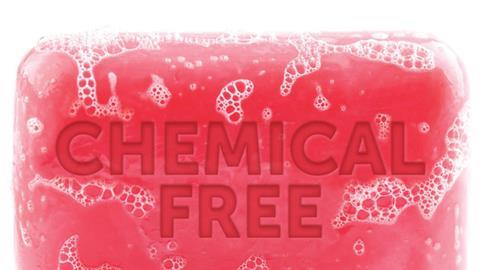The public’s mistrust of ‘chemicals’ will take great efforts to repair. Katharine Sanderson looks at the ‘c’-word
Picture the scene: A new shampoo comes on the market, advertised as being ‘all natural’, and devoid of ‘chemicals’. Cue outrage among chemists, decrying the ignorance of the public. Don’t they know that everything is made of chemicals? Chemistry blogs then proceed to fuel a debate that rages for a few days, irate chemists point out the errors strewn throughout the advert and everyone agrees that the general populace has a very poor grasp of chemistry. Something should be done.
But what? Aside from some internal unhappiness and hand-wringing, how are chemists addressing a chemophobic public? And where does the problem stem from?
‘We are afraid of things that don’t make intuitive sense,’ says Brian Zikmund-Fischer, a psychologist at the University of Michigan School of Public Health in the US. So, if a compound is included on an ingredients label, with no explanation as to what it is or why it’s there, that could cause concern, he says. Gordon Gribble, an organic chemist at Dartmouth College in New Hampshire, US, agrees: ‘People fear what they don’t understand – chemicals.’ Marketing exploits this, he says, by introducing nonsensical terms like ‘chemical-free’ to imply a product is safer or better in some way.
‘There are bad and good chemicals, but they don’t match natural and synthetic chemicals,’ says Michelle Francl, a chemist at Bryn Mawr college in Pennsylvania, US, who regularly writes about chemophobia. ‘I think “chemical” has begun to take on the meaning toxic and synthetic – that’s what people read it as.’
A matter of trust
To help understand how that meaning has warped over the years, as the suspicion of chemicals has grown, you only need look at the stories that have dominated the world of chemicals in the past 50 years – most of which are pretty grim. A good place to start is the early use of certain pesticides, which led to the publication in 1962 of Rachel Carson’s book Silent spring. Lynn Frewer, professor of food and society at Newcastle University in the UK, calls it a ‘landmark’ moment. ‘Prior to the 1950s pesticides were presented as safe,’ Frewer says, ‘but they weren’t. That was the first signal that science and technology was not always objectively accurate.’ From here, chemicals began to be viewed as an artificial addition to something, and that they could damage the environment. ‘The benefit to society of chemicals isn’t generally recognised,’ Frewer says.
Continue that with the environmental damage caused by chlorofluorocarbons, the Bhopal disaster, Belgium’s dioxin scandal in the 1990s, and it is understandable that the public’s trust in chemistry, chemicals and chemists has been severely knocked. ‘Instances where people and communities have been harmed by chemical waste, or by-products for which scientists have consciously worked to generate doubt (think the tobacco industry) are not just in people’s heads,’ says Janet Stemwedel, a philosopher of science at San Jose State University in the US.
Chemists need to remember that they’re not trying to convert everyone to be a chemist
Deborah Blum
When it comes to trust, whether or not science and scientists have learned from these events does not matter. ‘Trust is very hard to build,’ says Margôt Kuttschreuter, an expert in risk perception at the University of Twente in the Netherlands. ‘It takes one or two incidents for trust to be gone.’
It follows that rebuilding that trust is one way to tackle chemophobia. Is it the role of industry, working academic scientists or communicators to do the repair work? Deborah Blum, Pulitzer-prize winning author and journalist, who writes about poisons and is an advocate for battling chemophobia, sees roles for all. ‘Chemistry needs more journalists talking about it,’ Blum says, and chemists themselves need to join in: ‘Talk about chemistry in your everyday life,’ she says.
Telling people that they’re wrong and that everything is made from chemicals isn’t the way to go. ‘It doesn’t help to lecture people about chemistry,’ says Francl. Blum agrees: ‘Chemists need to remember that they’re not trying to convert everyone to be a chemist.’
‘Chemists need to be sensitive to what’s driving public opinion,’ says Frewer. This means not being defensive when an anti-chemistry point is made, rather to engage with the debate, ask questions, find out where the other person got their information and why they are concerned.
The business of risk
In understanding chemophobia there needs to be an appreciation that practicing scientists and the public view risks differently. Scientists, explains Kuttschreuter, see risk as the likelihood of something bad happening, and base decisions on that. Conversely, ‘the public sees consequences’, she says. So, if there is a bad side-effect, no matter how low the chances of that happening, the public are wary of the product. This explains why so many people are against nuclear energy, says Kuttschreuter. If an accident happened, it would be, and has been, a bad one. It simply doesn’t matter if the chances of the accident happening are extremely small – the argument more commonly put forward by scientists, she says.
As far as chemicals are concerned, this means that if a compound is known to be toxic, this concern will override the fact that it is present in low concentrations, or immobilised in some way.
Related to this is the weighing up of risks and benefits. ‘Risk perception is never in isolation,’ says Zikmund-Fischer. He cites bisphenol A (BPA) as an example. Banned in many countries from use in baby bottles, BPA is a controversial compound (see BPA: friend or foe?). Its associations with cancer have triggered campaigns against the use of BPA in any products. Yet, says Zikmund-Fischer, BPA is used in the linings of tin cans to stop food spoiling. ‘BPA is there to prevent botulism,’ he says, pointing out that botulism is natural, yet also lethal. Given the choice between botulism and a can lined with some BPA, Zikmund-Fischer prefers to take his chances with BPA. There needs to be a good reason to add a compound to a product, he says. ‘If you have a reason you can put that information to the consumer,’ he suggests.

Regulation and labelling are going to play a role. Regulations in the pharmaceutical industry are, necessarily, incredibly tight. Leaflets outlining any potential side-effects accompany all drugs, and ingredients lists are comprehensive. Given Kuttschreuter’s explanation about risk perception, it’s not hard to see that anxiety might creep in if a worrying side-effect of a drug is mentioned, even if that side effect was only observed in a tiny percentage of the clinical trial group. Conversely, Francl points out, herbal remedies – many of which contain compounds with pharmaceutical properties – are not regulated and do not have to mention side-effects. ‘It’s not a level playing field,’ Francl says. ‘People don’t think about the fact that herbal companies are making billions in profit, and it’s not a regulated industry,’ she says.
Industrial action
The chemicals industry, which is also subject to regulation, could do with engaging more with its consumers, suggests Frewer. ‘The chemical sector has been very removed from consumers,’ says Frewer.
Yet members of the industry do seem to be aware of public opinion. DuPont, the US chemicals giant based in Wilmington, Delaware, had as its slogan from 1935, ‘Better things for better living…through chemistry’. In 1982 the reference to chemistry disappeared and since 1999, the company has used the slogan ‘The miracles of science’. Mike Hall, DuPont’s corporate communications leader for western and central Europe says that the chemistry reference was dropped when the company aquired petroleum company Conoco. ‘There are no negative connotations related to chemistry inherent in our slogan changes,’ Hall says.

German chemicals manufacturer BASF is out and proud about the company’s chemical work. Its latest advertising campaigns include a series of TV adverts showing examples of where chemicals made at BASF find their way into everyday products, such as waterproof sticking plasters. The words chemistry and chemicals feature prominently in these campaigns, the company slogan is ‘The chemical company’. Its mission statement is ‘we create chemistry for a sustainable future’.
And rather than put people off, this move seems to be working, says Elisabeth Schick, BASF’s head of communications and government relations. ‘We don’t want to hide that we are a chemical company,’ she says. In 2007, the company started to regularly track awareness of and trust in BASF among its target group, Schick says, which includes decision-makers in politics, industry and society. Although coy about actual numbers, she says the company’s strategy is effective and there has been a statistically significant change in how much the company is trusted.
Schick wants to engage with those afraid of chemicals. ‘I have come across chemophobia,’ she says. ‘We have to recognise that this is a group of people that we would like to have contact with. You can’t just ignore them,’ she says.
Equally, she feels it would be disingenuous to shy away from BASF’s chemical link. ‘It would be really strange to talk about BASF as a science company [rather than a chemicals company] if you look at our portfolio,’ she says. ‘We simply say what we are doing.’
That frankness wins respect. ‘I really appreciate the BASF campaign,’ says social scientist Frewer. ‘It is transparent and honest.’ Matthew Hartings, a chemist at American University in Washington DC and blogger at ScienceGeist, agrees. ‘The openness of that process is really important in getting people to trust in chemistry again,’ he says.
And Hartings has seen other signs that might give chemists reasons to be cheerful. He feels that some of the ‘chemical-free’ marketing is going away. ‘I don’t see it growing,’ he says, although he concedes this may not be for any reason other than ‘marketing changes over time’.
A recent example is the wording on a Palmolive washing-up liquid bottle, which said ‘no unnecessary chemicals’. On the back of the bottle the ingredients list gives a reason why each compound is in there. Hartings is a fan of this approach – ‘it’s much better than saying “chemical free”,’ he says. Some of his fellow bloggers disagree. After spying the offending article in a shop, chemistry blogger SeeArrOh, who blogs at Just Like Cooking, took to the internet to express his distaste for the marketing ploy: ‘What does that even mean?’ he wrote of the slogan.
Bloggers have perhaps been the most vocal about chemophobia. In 2012, Hartings instigated a ‘toxic carnival’ where over the course of a week he and other chemistry bloggers wrote about their favourite toxic chemical, and the non-toxic role that chemical plays in our lives. The aim was to raise awareness, Hartings says. ‘Chemicals, on their own, are neither good nor bad. It is how we use them and how they are used that give context to their function.’ The blog carnival included posts on cancer treatments, nitrates, fluorides and many others. But what did this week of toxic celebration do, other than galvanise the blogging community? ‘As for what came out of it, unfortunately I think it was only the creation of some really nice blog articles,’ says Hartings.
What’s in a word?
What else can be done to tackle chemophobia? Francl has a suggestion that might sound irksome, but perhaps could help move the debate on more quickly. She says it might be time to relinquish the word ‘chemical’. The word is so frequently used in a negative sense, to mean a potentially harmful, possibly unnecessary, synthetic molecule, that the actual definition – a substance or compound – has been lost. ‘I don’t think we can take back the word chemical, I think it’s gone,’ says Francl. Perhaps she’s right.
‘This ridiculous marketing phrase “chemical-free” conflates the word chemical with the word evil,’ says Blum. Whereas ‘natural’ is associated with healthy and wholesome.

Blum, when writing her book The poisoner’s handbook: Murder and the birth of forensic medicine in jazz age New York, encountered this negative meaning of chemical head on, and was forced to tweak her chosen title for the book. Her preferred subtitle was A true story of chemistry, murder and jazz-age New York, but Blum’s publishers didn’t want that ‘c’ word in there, and it was removed.
Chemists have had to change the language they use in the past, says Hartings. ‘We saw this with alchemy,’ he says. There was plenty of good science in alchemy (see A fresh look at alchemy), but that got overshadowed by some alchemists’ obsession with changing matter into gold – and gave the word a bad reputation, Hartings says. This prompted the shift from using the word alchemy to the use of chemistry, he says.

Hartings’ efforts, apart from his blog, are in communicating chemistry to non-chemists. He teaches a course on the chemistry of cooking to non-science majors at American University. When the class about bread comes around, he starts the lecture by talking about unfolding proteins and Alzheimer’s, before moving on to talk about how unfolding proteins are important in the bread-making process. This, he hopes, highlights that similar processes can be dangerous, or beneficial, depending on the context. He hopes it’s the kind of conversation that other scientists will have with non-scientists in future.
Critical conversation
Ultimately, conversation might be the best way to solve chemophobia. Whether that conversation is BASF opening its labs to environmental campaigners so they can see what safety systems are in place, or Hartings teaching undergraduates that xantham gum comes from bacteria, yet is used as a thickener in cooking quite safely, part of the conversation is accepting people’s fears. ‘I’m not sure there’s such a thing as an irrational fear,’ says Hartings. ‘If you fear it, you fear it.’ And that conversation needs to be a two-way process. ‘Chemists should try to approach people with an attitude that is less eye-rolling and more “Why do you think that?”’ says Francl.
Chemists need to be critical of ‘chemicals’ as well. ‘Chemists in particular have to be vocal critics on the safety of drugs and food additives,’ says Hartings.
‘Chemists should be first to call out scientists and organisations that we think aren’t being trustworthy in their interactions with the public,’ says Stemwedel. ‘Those of us with scientific expertise surely have a better ability to do this than do non-scientists, which arguably gives us more of a duty to call out the bad actors so they don’t do harm to the public, or to the public’s trust of scientists.’
‘It’s important that we’re smart about the way we navigate our chemical world,’ says Blum. ‘We need to be rational and make smart decisions about what is dangerous and what isn’t.’
Katharine Sanderson is a science writer based in Bath, UK













No comments yet